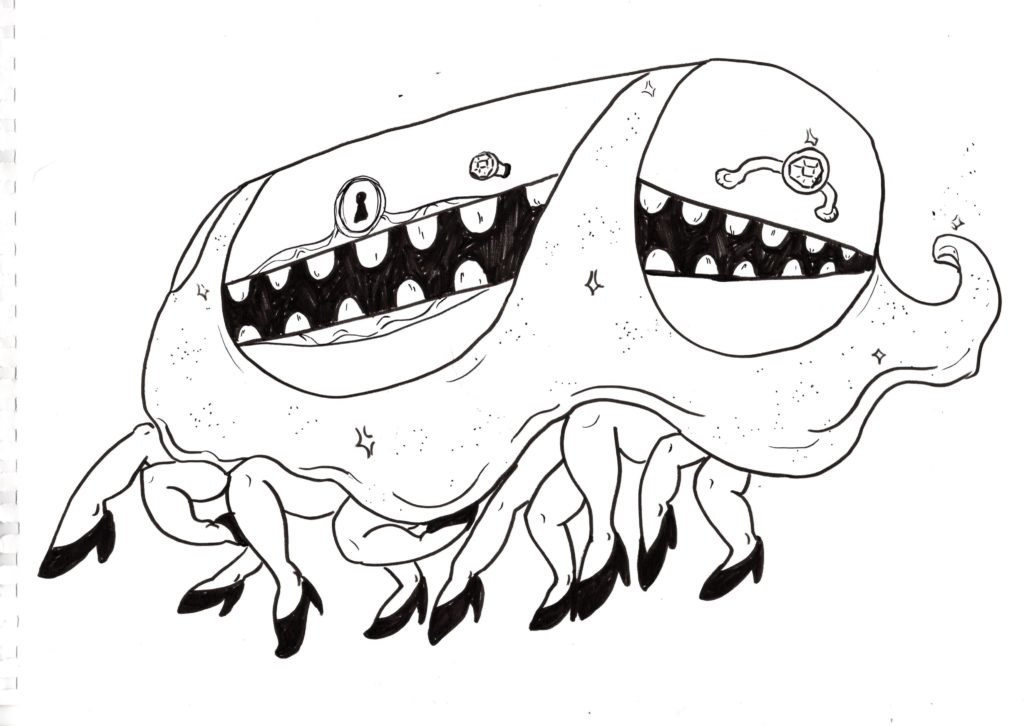#Pratchat26 – The Long Dark Mr Teatime of the Soul
In episode 26, Michael Williams of The Wheeler Centre joins Liz and Ben to get into the holiday spirit with Terry Pratchett’s very Christmassy 1996 Discworld novel Hogfather.
It’s Hogswatch, and the Assassins Guild of Ankh-Morpork has accepted a very unusual assignment, and Lord Downey has given it to the very unusual assassin Mr Teatime. But who would want to kill the Hogfather? And how would you even accomplish such a thing? As Death fills in for the Fat Man delivering presents, his granddaughter Susan is reluctantly drawn to investigate, teaming up with the newly created Oh God of Hangovers. But much more than the joy of children is at stake – for without the Hogfather, will the sun even rise tomorrow?
Hogfather brings to life a character previously mentioned only in passing rather paradoxically by replacing him with Death, who gets a sort of working holiday. It’s our second and final adventure with Susan, and the wizards get heavily involved – as does their arcane thinking machine Hex. It’s full of not-quite-Christmas cheer, black humour, true pathos and a pure expression of many of Terry’s most deeply held beliefs. Could this be the ultimate story of Christmas? Do its themes of belief and justice hit the mark? And what kind of creature would you call into existence if there were excess belief sloshing around? Use the hashtag #Pratchat26 on social media to join the conversation and have your say!
Podcast: Play in new window | Download (Duration: 2:10:39 — 60.2MB)
Guest Michael Williams is the Director of the Wheeler Centre for Books, Writing and Ideas in Melbourne. They have a year-round program of talks, interviews, panel discussions, podcasts and writing. Find out more about what’s happening at @wheelercentre on Twitter and Instagram, or check out videos of past talks on YouTube – including Michael’s 2014 interview with Terry Pratchett. You’ll find all the Wheeler Centre’s upcoming events at wheelercentre.com, as well as a collection of Michael’s writings and events. You can also find Michael on Twitter at @mmccwill.
The Sci-Fight comedy debate over the topic “Santa is Real” featured a great line-up of comedians and scientists, including previous Pratchat guest Nate Byrne (#Pratchat24). It was at Howler in Brunswick on Thursday December 12, 2019. Details and tickets for future debates, plus photos of the Christmas one, can be found at scifight.com.au.
Next month we continue through the Discworld with 1997’s Jingo, a tale of nationalism, war, racism and greed, which also has a submarine in it. We’ll be recording in the week or so before Hogswa- er, Christmas, so get your questions in via social media using the hashtag #Pratchat27.
You’ll find the full notes and errata for this episode on our web site.
Want to help us get to the end of our six(ish) year mission and read every Pratchett book – and more? You can support us with a tip, or a subscription for as little as $2 a month, and that’s cuttin’ our own throats! See our Support Us page for details.


